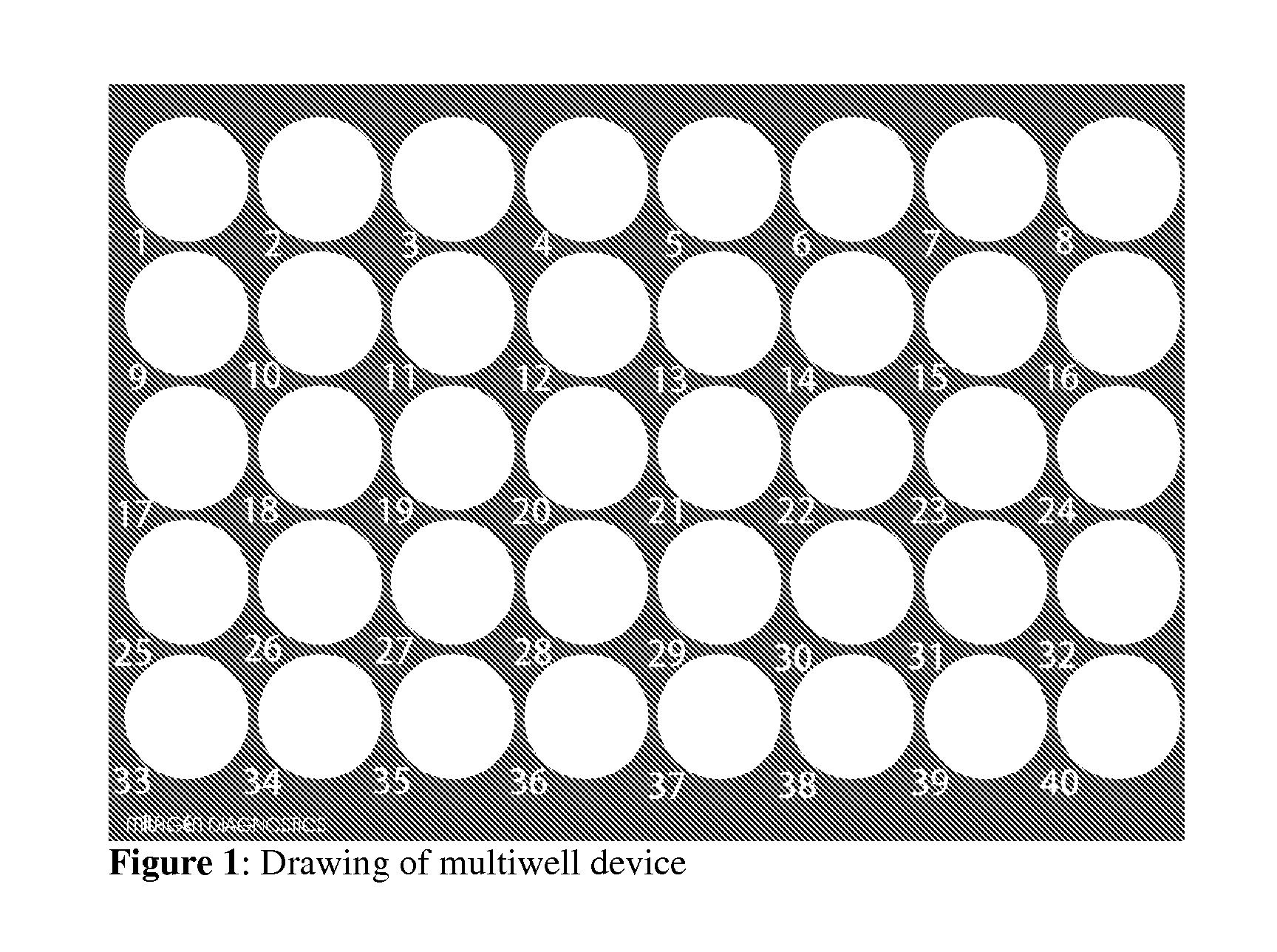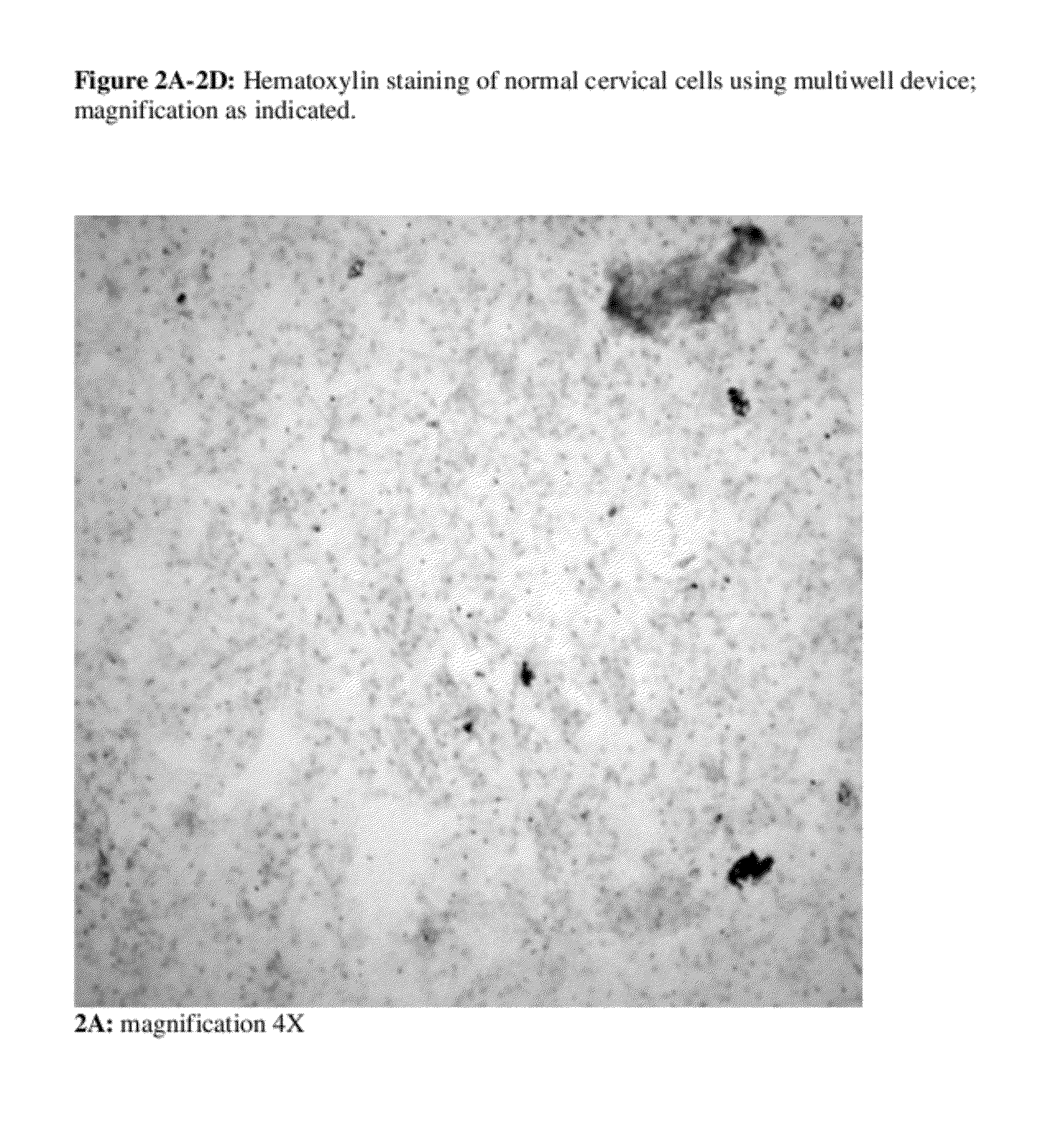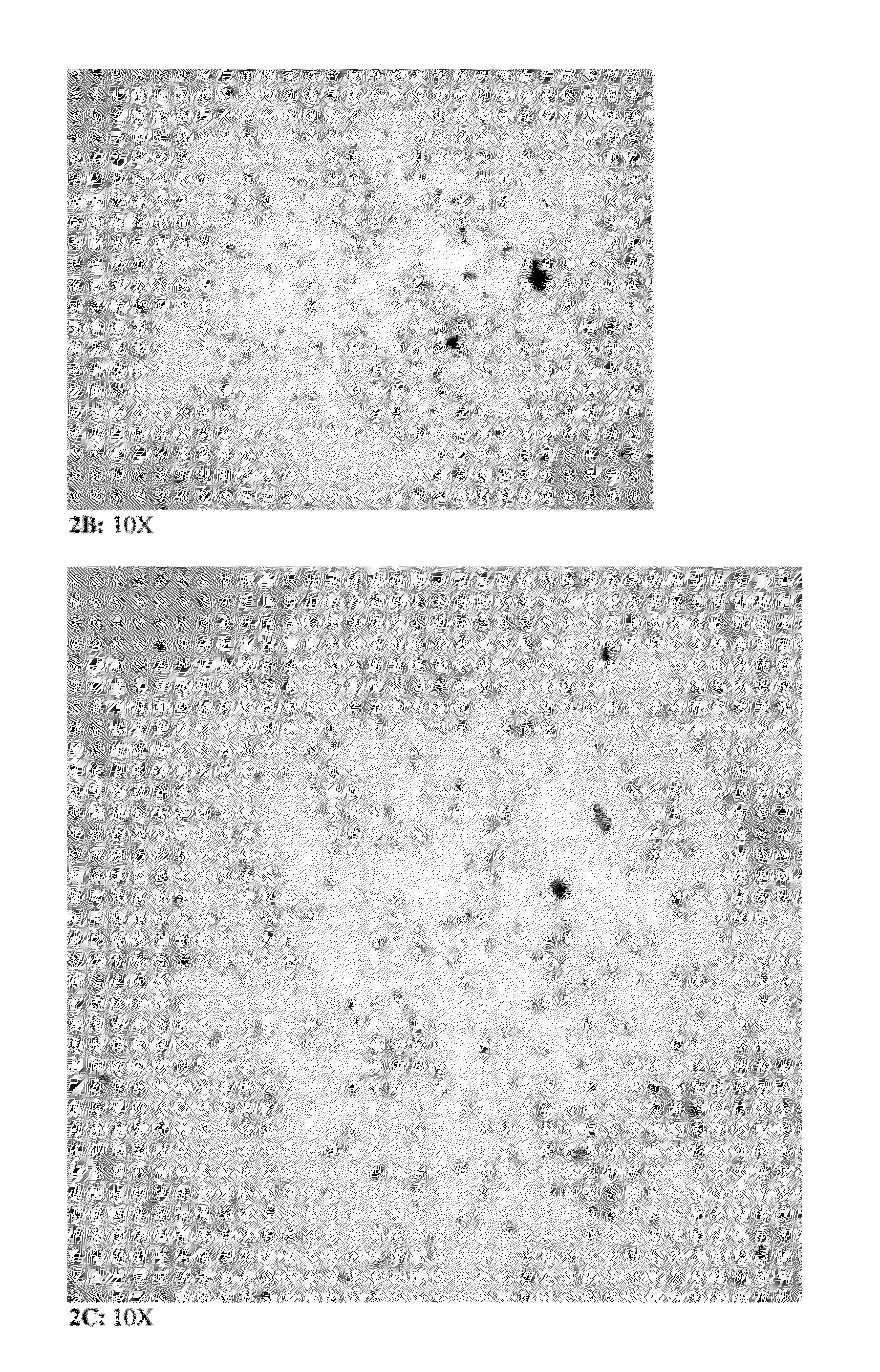Device and Methods for the Detection of Cervical Disease
- Summary
- Abstract
- Description
- Claims
- Application Information
AI Technical Summary
Benefits of technology
Problems solved by technology
Method used
Image
Examples
example 1
[0102]Hematoxylin staining of patient cervical samples using multiwell device. A fraction of an individual Thin Prep sample (i.e. 250 μl volume, approximately 50-100,000 cells) is layered on a single circular area of the multiwell device. Multiple samples can thus be handled and evaluated simultaneously. The device has been previously UV irradiated to enable cell attachment. However, alternate methods for cell attachment can be utilized depending on the material the device is made of. Samples are air dried either at RT or in a 37-40° C. chamber, then rinsed with PBS. Cleared from excess cell debris, cells are ready for any cytological stain.
[0103]In this specific embodiment, hematoxylin staining is performed. For hematoxylin staining, multiwell device is rinsed with ddH2O, and covered with a few drops of weak Mayer's hematoxylin solution for 1-2 min. Multiwell device is rinsed twice with tap H2O or bluing solution (Scott's tap water, or sodium or lithium carbonate solution to ensure...
example 2
[0104]Co-culture and hematoxylin staining of patient cervical cells and cancer cells in multiwell device, in an assay condition mimicking Pap smear screening. First, 250 μl of an individual Thin Prep sample, previously diagnosed as normal, is layered on a single circular area of the multiwell device. Multiple samples can thus be handled and evaluated simultaneously. Samples are air dried then rinsed with PBS, and stained with hematoxylin, as described in Example 1. The multiwell is rinsed with 95% ethanol prior to the addition of cancer cells.
[0105]The cervical cancer cell line SiHa (ATCC #HTB-35), a human squamous cervix carcinoma cell line, reported to contain one to two copies per cell of integrated HPV16 genome, is used in the co-culture experiment together with cervical cells from Thin Prep samples. Cell line is cultured according to ATCC or provider's recommendations, trypsinized and counted according to standard procedures. A few SiHa cells are deposited on each individual ci...
example 3
[0106]Immunostaining of patient cervical sample using multiwell device and commonly used monoclonal antibodies. This example describes how immunostaining can be performed in the multiwell device using commercially available and commonly used monoclonal antibodies. This example thus further demonstrates the utility of immunostaining as an adjunct to microscopic evaluation of cell morphologies in cervical screening.
[0107]Because preneoplastic, dysplastic and cancerous Thin Prep samples are rare, we resorted to an experimental condition mimicking a patient sample for cervical cancer screening, ie. mixing normal cervical cells with cells from a cancer cell line that are grown ON in co-culture, as described in Example 2. In this experimental model, a constant amount of normal patient cervical cells derived from a previously diagnosed normal Thin Prep (250 μl) is layered in each circular area of the multiwell device, air dried at RT or in a 37-40° C. chamber then rinsed with PBS. Subseque...
PUM
 Login to View More
Login to View More Abstract
Description
Claims
Application Information
 Login to View More
Login to View More - R&D
- Intellectual Property
- Life Sciences
- Materials
- Tech Scout
- Unparalleled Data Quality
- Higher Quality Content
- 60% Fewer Hallucinations
Browse by: Latest US Patents, China's latest patents, Technical Efficacy Thesaurus, Application Domain, Technology Topic, Popular Technical Reports.
© 2025 PatSnap. All rights reserved.Legal|Privacy policy|Modern Slavery Act Transparency Statement|Sitemap|About US| Contact US: help@patsnap.com



